Spotlight on Commerce: Valencia Martin-Wallace, Deputy Commissioner for Patents, USPTO
Guest blog post by Valencia Martin-Wallace, Deputy Commissioner for Patents, USPTO
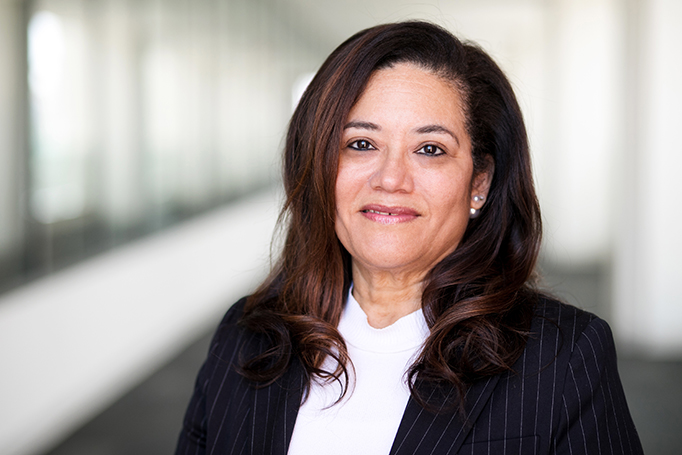
As the Deputy Commissioner for Patents at the USPTO, I am responsible for leading the organization’s international patent cooperation programs and initiatives. I also have oversight of the technology centers responsible for examining patent applications in the fields of telecommunications, mechanical technologies, and design.
I graduated with a B.S. in electrical engineering from Howard University, where I learned alongside a wonderful group of students from diverse backgrounds. After flexing my engineering muscle for three years, I decided to pursue intellectual property (IP) law at George Washington University School of Law. At about the same time, I began my career at the USPTO as a patent examiner. After graduating from law school, I realized public service at the USPTO was the right career choice for me. Nearly 29 years later, I’m still a member of the USPTO community. I would not be where I am today, in an exciting career in IP, without the support and guidance of very progressive parents, teachers, and mentors, and the examples set before me by talented women scientists, engineers, and attorneys.
I also have the unique pleasure and responsibility of being the executive lead, assisting the Director of the USPTO, with establishing the National Council for Expanding American Innovation (NCEAI) and the development of the national strategy for expanding American innovation.
The NCEAI consists of leaders from every corner of the innovation ecosystem; it was established to help guide the USPTO in developing a comprehensive national strategy to build a more diverse and inclusive innovation ecosystem by encouraging participation of women and other underrepresented groups. This strategy will be organized by a broad conceptual framework that considers the entire pathway along which interest and expertise in intellectual property and innovation is cultivated and nurtured in an individual.
I am honored to be a part of the Department of Commerce USPTO family during this groundbreaking period in the history of intellectual property. I feel privileged to be a part of this movement to increase participation in our innovation ecosystem by inspiring, empowering, and supporting all future inventors and entrepreneurs. These efforts will advance innovation and help our Nation’s economy grow.
Whenever I have the opportunity to talk to young women about intellectual property, I encourage them to challenge their minds through the fields of sciences, technology, engineering, and math. I know they would find the same fulfillment in these fields that I have always found. I also urge them to work hard, take pride in a job well done, never limit themselves, and reach back to help those who come behind them.
During Women’s History Month, I celebrate the accomplishments of the women engineers and scientists who have paved the way for me and many women just like me. I revel in the contributions of the women who have played a vital role in advancing our great country. Women like Beulah Louise Henry, a prolific inventor with 49 U.S. patents and over 100 inventions credited to her name; Marian Croak, a pioneer in the advancement of Voice over Internet Protocol (VoIP) who holds over 200 patents; and Ellen Ochoa, the first Hispanic-American woman in space and co-inventor on three patents. These and so many other women inventors are an inspiration and I look forward to seeing how future women innovators and entrepreneurs will shape our world.
Ed. note: This post is part of the Spotlight on Commerce series highlighting the contributions of Department of Commerce employees during Women’s History Month.
Posted at 12:25PM Mar 22, 2021 in USPTO |
Artificial intelligence tools at the USPTO
Blog by Drew Hirshfeld, performing the functions and duties of the Under Secretary of Commerce for Intellectual Property and Director of the USPTO
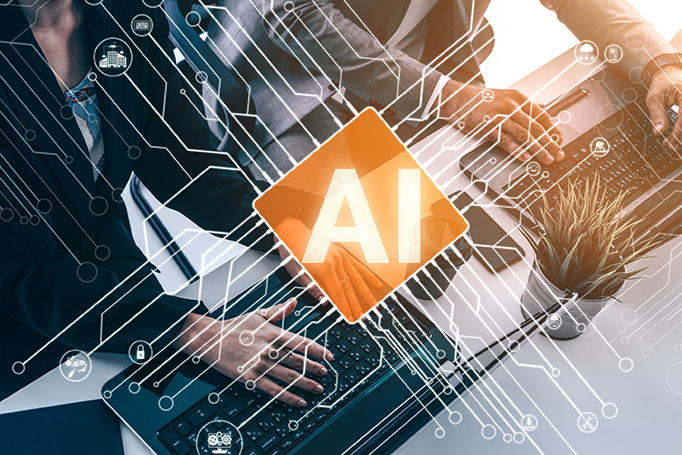
To incorporate AI into our examination tools and processes at the USPTO, we’ve undertaken a comprehensive development strategy including extensive market research and rigorous testing of a wide range of proof-of-concepts to identify the best solutions. Our objective is not just to deploy smarter technology, but to build a smarter organization by coupling the strengths of our workforce with the strengths of AI. This is the beginning of a whole new trajectory in how we leverage technology to transform patent and trademark operations for the better.
We are incorporating AI tools into two critical areas of patent examination: search and classification.
Performing a complete prior art search is a critically important component of the patent examination process and the USPTO’s mission to issue reliable patent rights. However, the exponential growth of prior art and tremendous pace of technological innovation make it increasingly more difficult to quickly discover the most relevant prior art. To meet this challenge, we have developed an AI-based prototype search system that helps to identify relevant documents and provides suggestions for additional areas to search. In addition to providing world-class patent AI models, the system is designed to learn from the world’s greatest patent searchers, our USPTO examiners. The system is configured to automatically capture feedback data from our examiners to yield additional enhancements over time. We are also developing features to help examiners interpret results generated by the AI models to provide transparency into the system. A beta version of this new AI tool was released to a subset of examiners in March 2020. Assessments conducted to date yielded promising results, and steps are being taken to incorporate AI into our next generation search tool for examiners.
We also developed an auto-classification tool that leverages machine learning to classify patent documents using the Cooperative Patent Classification (CPC) system. The system can suggest CPC symbols, and includes the ability to identify claimed subject matter for additional refinement of the suggested CPC symbols similar to our AI search system. The auto-classification system also includes indicators that provide users with insight into the reasoning of the AI, by linking suggested CPC symbols to specific portions of the document. Enhanced feedback mechanisms designed into the system integrate with our existing classification processes to support training the AI. Based on an analysis of system performance, the USPTO implemented auto-classification in December 2020 to automatically identify claimed subject matter with CPC for internal operations. As a result, the agency is realizing reductions in procurement expenditures for acquiring CPC data. Additionally, we are continuing to develop further capabilities to support a broader range of patent classification requirements at the USPTO.
These successes are demonstrating the value of applying AI to improve the agency operations and strengthen the IP system. To continue building from these successes, our Patents team has expanded their investigations to explore potential new opportunities to leverage AI. For example, research is now underway on AI-based image search capabilities which could open up whole new ways to retrieve prior art. This could be particularly useful for searching patent applications where examiners rely heavily on images for making patentability determinations, such as design patent applications.
On the Trademarks side, we recently completed market research in AI capabilities for image comparison and for checking the acceptability of identification of goods and services against the entries in the Trademarks ID Manual. The USPTO team developed AI prototypes to compare trademark images, to suggest the correct assignment of mark image design codes, and to determine the potential acceptability of the identifications of goods and services. A beta test of these prototypes through a common user interface with approximately 10 stakeholders began in November 2020 and continues, with a larger beta possible later this year. In addition, the USPTO has tested solutions for false specimen detection capabilities using a software program, which was integrated on December 1, 2020 into the agency’s efforts to identify digitally manipulated specimens of use or mock-ups of web pages. Finally, a prototype of an AI based chatbot for answering frequently asked questions via the USPTO website could be ready for beta testing later this year.
Overall we have achieved some remarkable milestones and made great strides toward integrating AI into the USPTO’s day-to-day functions. Stay tuned for more exciting updates from the USPTO on AI in the near future.
Posted at 06:12AM Mar 18, 2021 in USPTO | Comments[7]
Spotlight on Commerce: LaRita Jones, Division Chief, Office of Human Resources, USPTO
Guest blog post by LaRita Jones, Division Chief, Office of Human Resources, USPTO
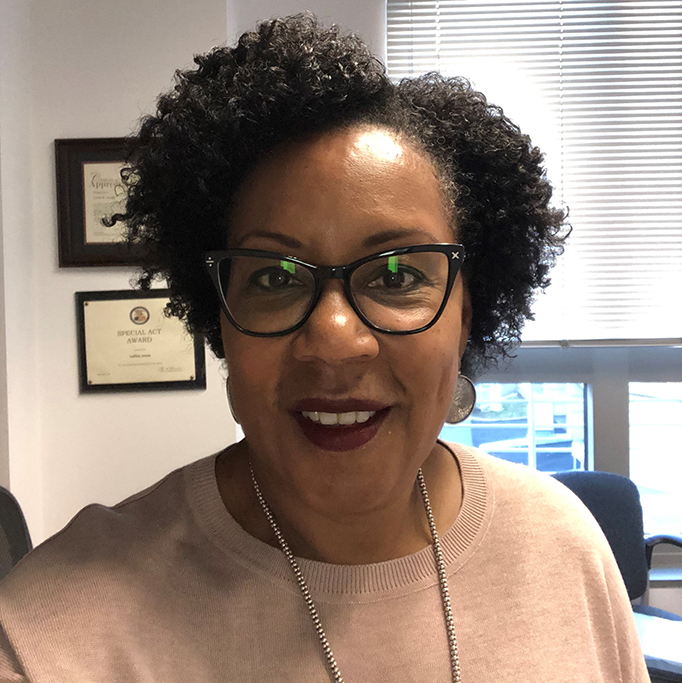
Black History Month is a time to honor and show gratitude to African Americans who have made contributions – whether extraordinary or minute, well-known or untold – to better humanity in some way. It is a time to express pride as we reflect on a heritage full of triumph over the harshest of adversities and celebrate innovations we have made in the arts, science, and technology and our achievements in politics and business. It is a time to remember the Black heroes of the past while uplifting our heroes of today.
A personal hero of mine is my father, Carl Ross. He was a career Army soldier who served two tours in Vietnam and retired as a master sergeant. He performed his duty with the highest work ethic and took so much pride in defending his country, even when fellow soldiers and officers did not treat him as their equal. I admire him for leading a life of bravery, honor, and integrity despite all the barriers to equality that he faced.
I remember him meticulously pressing his uniform and polishing the toes of his combat boots so perfectly that I could see my reflection. My father taught me that education was the top priority and that hard work starts with showing up and ready to work hard every day. He said that being a committed, responsible individual who can be trusted is important, particularly when things are not fair or favorable. I have leaned on all that my dad taught me about having integrity and dignity, showing up every day, working hard, and treating others with respect – even when I did not receive the same in return.
That advice was especially relevant when I attended the University of Washington to earn a degree in Sociology. There were few African Americans enrolled here and it was not always easy. As a way to connect with other students of color, I joined Alpha Kappa Alpha Sorority, Inc. and volunteered in communities with other Black sororities and fraternities.
It was through this sisterhood that I gained a deeper understanding of, and reverence for, my African American heritage, which is filled with heroes who continue to break barriers still today. With immense pride, I have witnessed the election of the first female, and first African American vice president Kamala Harris, who is also a member of our illustrious sorority.
Seeing my father give his entire career in service to his country and then joining an organization rooted in service to humanity, a career in public service was a natural fit for me. Currently, I serve as the division chief of a high-functioning team of human resources professionals responsible for recruitment, classification, and staffing consultation in support of the Patents business unit.
I extend my father’s advice to my employees and I can see in their work ethic that they share the same passion as I do for connecting top Science, Technology, Engineering and Mathematics (STEM) talent with fulfilling careers at the Commerce Department’s U.S. Patent and Trademark Office (USPTO). Careers in government are more progressive, inclusive, and agile than ever before. Opportunities today seem limitless compared to when I started my own government career. And I am proud to work at an agency that champions diversity and inclusion in the way that the USPTO does.
We are constantly striving to increase recruitment and retention among underrepresented populations as part of one of our agency’s key strategic goals to “recruit, enhance and sustain an engaged workforce.” As we continue to build deeper and more meaningful relationships to attract, hire, and retain talent from historically Black colleges and universities, Hispanic serving institutions, tribal and community institutions, and women in STEM organizations, it is my hope to see the USPTO significantly boost each of these employee groups in the years to come.
I also hope that my work in some way—whether extraordinary or minute—inspires students at those institutions who may not yet grasp that their personal and professional opportunities are indeed limitless, thanks in large part to the contributions of African Americans in this country.
Each celebration of Black History Month means that there is another opportunity to celebrate African American heroes. Hopefully, it also motivates and encourages future generations to value themselves and fully appreciate all they can become.
Ed. note: This post is part of the Spotlight on Commerce series highlighting the contributions of Department of Commerce African Americans during Black History Month.
Posted at 10:51AM Feb 21, 2021 in USPTO | Comments[1]
Leading the way in the IP economy
Blog by Andrei Iancu, Under Secretary of Commerce for Intellectual Property and Director of the USPTO
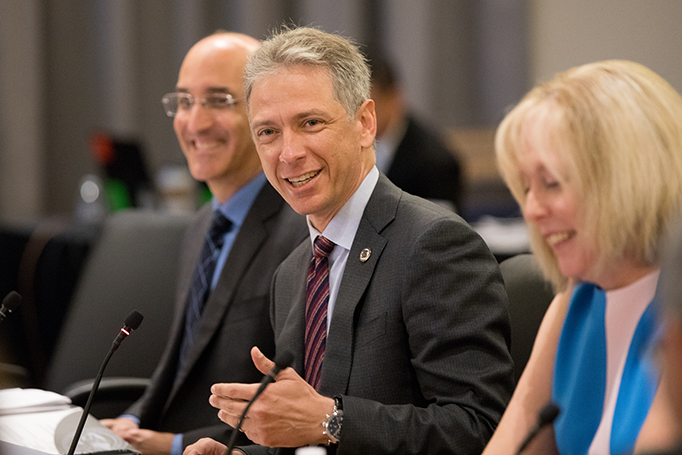
Director Iancu at the quarterly meeting of the Patent Public Advisory Committee at the USPTO in Alexandria, Virginia on August 2, 2018. (Photo by Jeff Isaacs/USPTO)
At the outset of my tenure as Director of the USPTO in early 2018, I challenged the USPTO staff and stakeholders to focus on reclaiming our nation’s leadership on intellectual property, first by creating a new, pro-innovation, pro-IP dialogue and, second, by balancing our IP systems and increasing the reliability of the rights we issue.
Working together for the past three years, we did exactly that—and so much more. The list below summarizes a number of our accomplishments, but let me highlight a few.
We issued new guidance to our examiners on patent subject matter eligibility in 2019. The USPTO’s Chief Economist confirmed in a study released in April 2020 that the uncertainty of examination in this area has decreased by a remarkable 44% in the one year following publication of the guidance.
We balanced post-grant proceedings at the Patent Trial and Appeal Board through a series of carefully calibrated initiatives, including aligning the claim construction standard with the district courts, improving the amendment process, reducing duplicative proceedings, and increasing transparency and consistency of decisions. We decreased patent examination pendency to 23.3 months on average, the lowest since 2001. We also reduced the average patent appeal time to a remarkable 13 months, down from 30 months in 2015.
We reduced fraudulent trademark applications through improved technology, examination, and various new procedures. And we saw the passage of the Trademark Modernization Act, the most important trademarks legislation in decades.
Furthermore, we improved operations at the USPTO, and upgraded, backed up, and secured our vast data repositories, information technology systems, and telecommunications networks. We completely revamped and modernized our website. And we created artificial intelligence tools for classification, examination, and much more to come. Importantly, we maintained continuity of operations during the pandemic and during a government shutdown due to lapse in funding.
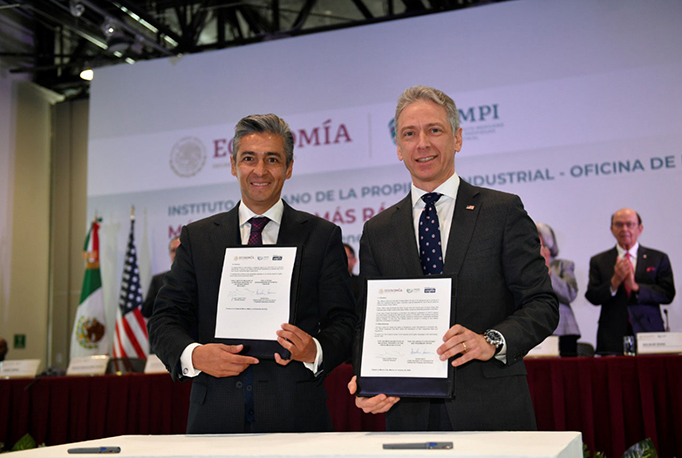
Internationally, we forged a broad-based coalition of countries to elect new leadership at the World Intellectual Property Organization (WIPO) that respects and champions intellectual property rights. We implemented a first-of-its-kind Parallel Patent Grant with Mexico. And we signed a patent validation agreement with Cambodia, and many MOUs with countries around the world.
We recognized the need for a renaissance in American innovation – one that opened doors for more women, minorities and geographic regions to participate in the American intellectual property system. As a result, last fall we kicked-off the inaugural meeting of the ground-breaking National Council for Expanding American Innovation, which is now fully operational and in the process of helping us develop a first-ever National Innovation Strategy aimed at substantially broadening participation in the innovation economy, demographically, geographically and economically.
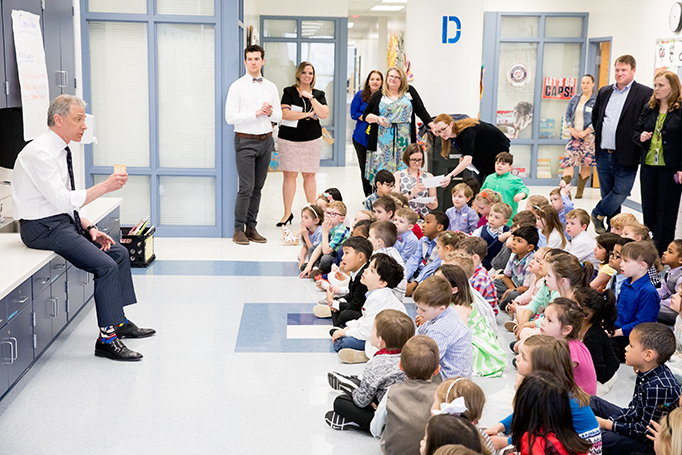
Additionally, I’ve spent the past year presenting to faculty and students at dozens of America’s top intellectual property universities, seeking to establish among our next generation of IP professionals a common understanding of, and appreciation for, the theories, benefits, and practical applications of intellectual property laws.
Through these and numerous other engagements, we have highlighted for teachers, parents, and students from kindergarten through college the virtues of invention, IP protection, and entrepreneurship, and shared information about the important and exciting careers that exist for innovators and IP professionals. Additionally, we created new training programs, such as the Legal Experience and Advancement Program, for fledgling patent attorneys so they can gain confidence and experience in patent and trademark proceedings.
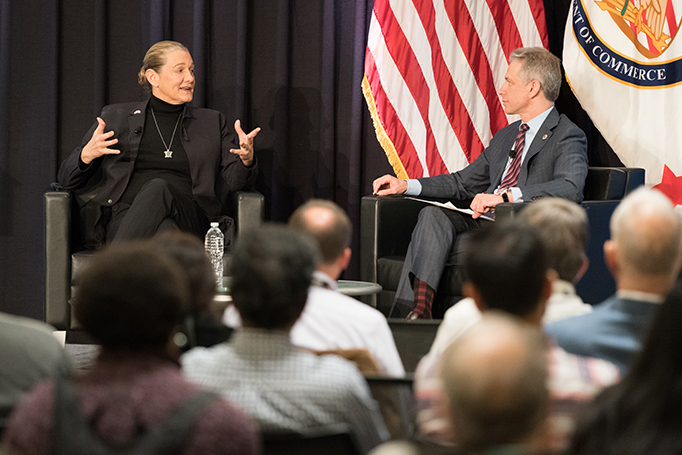
We have promoted the incredible—yet mostly unheralded—stories of the people whose inventions have fundamentally changed the lives, and livelihoods, of millions of Americans. For example, we created the first-ever USPTO Speaker Series, bringing to USPTO employees and the public some of our nation’s greatest inventors and entrepreneurs. We also took the opportunity of promoting the grant of Patent 10 Million to raise the profile of our inventors and entrepreneurs, and we created the Journeys of Innovation series of online articles about innovators who have made a positive difference in the world. These people should be our most celebrated national figures, role models, and mentors for the next generation of Americans.
We have worked to improve the dialogue surrounding IP in many other ways too. When I arrived at the USPTO, I noted that for too long, the words used to describe our patent system focused too heavily on its faults. Our IP system—born from the Constitution and steeped in our history—is a crown jewel, a gold standard. It must be defined by its goals, aspirations, and successes. As a result, we worked to create a new, pro-innovation narrative that focuses on the brilliance of inventors, the excitement of invention, and the incredible benefits they bring to society, while still ensuring patent and trademark examination of the highest quality.
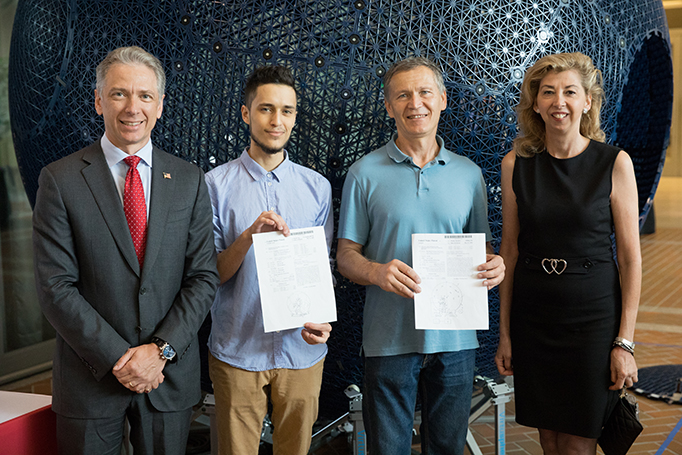
This pro-innovation, pro-IP dialogue is more important than ever, since we depend on inventors and entrepreneurs to solve mankind’s most vexing problems, including the current pandemic. These and creators of all kinds have always defined America, and, with a robust IP system, will continue to do so.
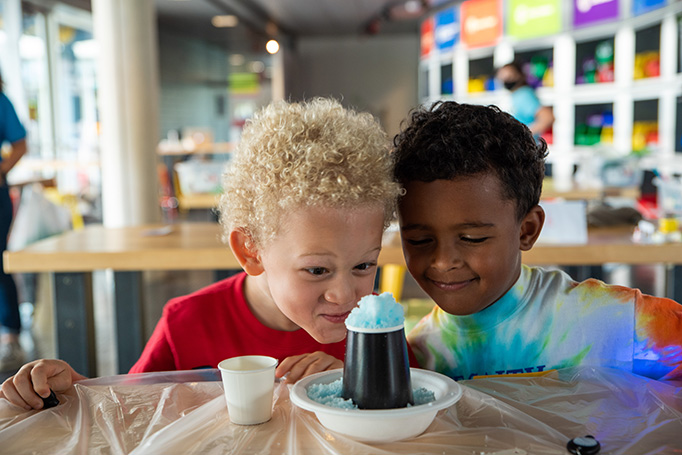
Through it all, the most amazing people I met these past few years are the inventors of the future—starting with kindergarteners making their first creations and excitingly explaining them to me. Jumping up and down, many would say, “Director, I want to be an inventor when I grow up!” Their unbridled enthusiasm assures me that America’s best days are yet to come.
Thank you for the opportunity to serve this great country that I love.
__________________________________________________________________________________________________________________
Highlights of USPTO Accomplishments (2018-2021)
1. Strengthened the USPTO’s Patent and Trademark Operations
- Reduced patent pendency to below 15 months for a first Office action and below 24 months for final disposition, the lowest patent pendency since 2001.
- Reduced ex parte appeal pendency to 13 months, down from 30 months in 2015.
- Accomplished mandatory electronic filing for all trademark filings.
- Developed artificial intelligence and machine learning tools for patent and trademark application processing and examination.
- Achieved permanent congressional authorization of the TEAPP telework program, which will ensure strong hiring, retention, and cost savings.
- Achieved enactment of legislation to allow the USPTO to limit response periods for trademark Office actions in order to further reduce pendency.
2. Increased the Certainty, Reliability, and Quality of IP Rights
- Issued Section 101 examiner guidance on patent eligibility, improving certainty of examination by 44%.
- Improved and added to patent examiners’ search tools, including launch of collaborative search pilot training and enhanced examiner search training.
- Established a new automated routing system for patent applications to help ensure incoming applications are best matched with examiners with relevant experience.
- Adjusted the performance appraisal plan for patent examiners to focus on improved search and examination quality.
- Reorganized senior patent management to broaden responsibility for operations and quality.
- Increased the rate of patent examiner interviews to an all-time high.
- Negotiated a revised policy with the U.S. Department of Justice and the National Institute of Standards and Technology on standard essential patents.
- Prepared and released multiple reports on public views on artificial intelligence and IP policy.
- Achieved the enactment of trademark legislation to strengthen trademark owners’ enforcement rights in court and to create additional tools for the USPTO to combat fraud on U.S. IP systems.
- Achieved the enactment of legislation to implement the Marrakesh Treaty, which enables greater access to copyrighted content by the blind, visually impaired, and otherwise print disabled.
- Multiple legislative achievements to balance and strengthen the copyright system.
3. Changed the Dialogue on IP
- Created a public relations and media campaign celebrating the patent system, including the signing of patent 10 million.
- Held Patents for Humanity awards ceremonies for inventors who create solutions to humanitarian crises.
- Achieved enactment of legislation to enhance the Patents for Humanity program by allowing the award benefits to be transferable.
- Conducted numerous briefings for Members of Congress and their staff on the importance of patents to producing lifesaving technologies.
- Promoted the induction of 56 inventors into the National Inventors Hall of Fame.
- Created the USPTO Speakers Series to allow leaders in the IP system to share innovation success stories with Office employees and the public.
- Created the Journeys of Innovation series on the USPTO’s home page to celebrate inventors and their personal stories.
4. Balanced AIA Review Proceedings at the Patent Trial and Appeal Board
- Promulgated rules to change claim construction standard to match district courts, to allocate burdens with respect to motions to amend, to respond to all claims and grounds in a petition, and to weigh all evidence at the institution stage equally for both patent owners and petitioners.
- Created a Precedential Opinion Panel to address important issues before PTAB.
- Designated numerous decisions as precedential and issued guidance memoranda to improve consistency of PTAB proceedings.
- Developed institution factors to reduce multiple patent challenges.
- Created a Motion to Amend Pilot Program to improve amendment process.
- Established standard operating procedures to improve transparency.
5. Bolstered the United States’ Leadership in IP
- Extended the U.S.’s lead as first in the U.S. Chamber of Commerce’s Global IP Index, and increased the U.S.’s rank in patents from twelfth (2018) to tied for second (2020) and in trademarks from fifth (2017) to tied for first (2020).
- Led effort to elect a WIPO Director General with strong support for intellectual property protection.
- Helped lead the Administration in adding new IP provisions as part of the USMCA.
- Achieved the first ever Parallel Patent Grant Agreement with Mexico and Patent Validation Agreement with Cambodia.
- Negotiated new work-sharing agreements with multiple foreign IP offices.
- Elevated the diplomatic rank of four USPTO IP Attachés.
- Worked with international IP forums to assist innovators and stakeholders to create
COVID-19 solutions.
6. Reduced Abuse of the IP System
- Established U.S. Counsel Rule to reduce fraudulent trademark filings.
- Worked with the National Crime Prevention Center to launch a nationwide public awareness campaign regarding the dangers of counterfeit products.
- Established a special task force to monitor and identify fraudulent trademark filing behaviors and to develop tools, including policies, to address them.
- Established a successful pilot program and then a permanent program to conduct random audits of post-registration maintenance and renewal documents to ensure the accuracy of the trademark register.
7. Strengthened the USPTO’s Fiscal Health
- Extended USPTO fee-setting authority for an additional eight years, through the end of 2026.
- Restructured patent and trademark fees to ensure better cost recovery.
- Increased the reserve fund to ensure stability and continuity of USPTO operations.
- Maintained USPTO operations during temporary suspension of funding.
- Identified $1B in diverted fees in the U.S. Treasury.
8. Expanded American Innovation
- Submitted the SUCCESS Act report to Congress, which studied participation rates among women, minorities, and military veterans in patenting.
- Prepared and released well-received Progress and Potential Report and update, which studied participation rates among women in patenting.
- Launched a National Council of private, academic, non-profit, and public sector executive-level leaders to expand American innovation.
- Created the LEAP program at PTAB for training and developing new patent attorneys, and established a PTAB law clerk program.
- Supported independent inventors, small business concerns, and nonprofit organizations in filing patent applications and encouraged collaboration with the federal Government by expanding the opportunities to qualify for the small entity discount for inventions made during the course of federally-funded or federally-supported research.
- Enhanced the USPTO’s home page to allow first-time inventors and small businesses to easily access a map of all the resources the USPTO offers in their local areas.
- Launched an online platform available on the USPTO website that provides resources for inventors and practitioners to encourage greater participation in the patent system.
- Renamed Alexandria headquarters’ auditorium after Clara Barton, the first public space at the USPTO ever named after a woman.
9. Ensured Continuous Operations During Pandemic
- Transitioned seamlessly to all telework presence for employees during pandemic.
- Transitioned to all-virtual board hearings.
- Successfully sought enactment of statutory authority to provide relief at the onset of the COVID-19 pandemic.
- Issued extensions of time for patent and trademark filing and fee deadlines, due to COVID-19 issues, within three days of enactment of statutory CARES Act authority.
- Established fast-track examination programs for COVID-19-related medical treatments and devices.
- Established the Patents 4 Partnership program to facilitate licensing of COVID-19 innovations.
- Launched the first all-virtual, entry-level training program to on-board over 400 new examiners.
10. Modernized the USPTO IT System
- Upgraded the USPTO IT system with new, faster, more efficient, and secure servers.
- Established redundant systems to ensure continuity of operations in case of certain IT failures.
- Initiated transition to the cloud for essential services.
- Rebuilt the USPTO website for a more modern look and a more interactive interface.
Posted at 07:30AM Jan 19, 2021 in USPTO | Comments[7]
Launch of the National Council for Expanding American Innovation
Blog by Andrei Iancu, Under Secretary of Commerce for Intellectual Property and Director of the USPTO
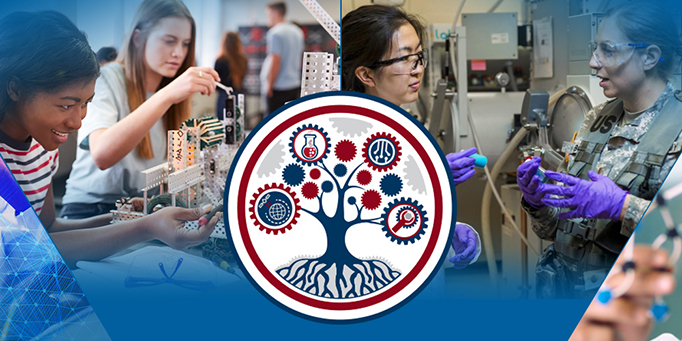
On September 14, the National Council for Expanding American Innovation had its inaugural meeting, virtually of course. The National Council includes respected leaders in the private and public sectors who are committed to fostering a more inclusive innovation ecosystem. The National Council is charged with helping develop a National Strategy to expand American innovation by tapping into the strength of our nation’s diversity, and increasing innovation opportunities for all Americans. I encourage you to learn more about the initiative by reading the excellent remarks made by the council members or by watching the recording of the event.
The National Council was born out of a report we transmitted to Congress in 2019 in response to the Study of Underrepresented Classes Chasing Engineering and Science Success (SUCCESS) Act of 2018. This report came on the heels of one of the most comprehensive studies on women inventors that was published by the USPTO in February 2019 titled “Progress and Potential: A profile of Women Inventors on U.S. Patents.” In that study, we found that only about 12 percent of inventors named on U.S. patents are women. The 2020 update to our Progress and Potential study reviewed an additional nearly one million issued patents and three years of new data and found that more women are entering and staying active in the patent system than ever before. Despite this progress, however, the gap is still wide, and there is still much that remains to be done to close it.
One of the foremost priorities for the National Council is to help the USPTO develop a long-term comprehensive plan aimed at expanding participation in America’s innovation ecosystem among women, minorities, other underrepresented groups, and Americans across the geography of the United States. It is imperative that we substantially broaden participation in the technologies that are driving a new industrial revolution.
This national strategy will encourage and equip Americans across all demographics and across the United States to become innovators and ensure they have equal opportunities to succeed. It will include innovation and intellectual property education at all levels—from kindergarten to graduate school—and emphasize employment development, access to capital, and product commercialization.
Our plan will identify specifically where along a potential inventor’s path we come up short and specifically how we can address it, and will also include metrics against which results can be measured over time. Mere rhetoric will no longer suffice. To move the needle, we must act with specificity, and we must insist on measurable results.
Expanding participation in the innovation ecosystem is one of our nation’s best and most tangible opportunities for enhancing economic growth and improving the standard of living and quality of life for every American. Industry, government, academia, and professional groups must work together to ensure that all Americans have the opportunity to innovate, start new companies, succeed in established companies, and achieve the American Dream. This will help unleash the next technological revolution, drive economic growth, and solidify America’s competitive edge as a global innovation leader.
In the upcoming months, the USPTO will have numerous engagement activities that focus on the pursuit of expanding American innovation. We have already enjoyed a number of speaking engagements at universities around the country discussing with students and faculty the importance of diversity in the innovation and intellectual property ecosystems. And in order to consider everyone’s suggestions as part of this strategy, a request for comments was published in the Federal Register asking the public to provide input to assist in the development of the national strategy. Comments can be submitted until February 8, 2021.
To more broadly engage with the public on our Expanding American Innovation initiative, we also kicked off a series of virtual “innovation chats.” The first one is a recently-recorded conversation between myself and Lisa Jorgenson, the newly appointed Deputy Director General for Patents and Technology at the World Intellectual Property Organization. You can view the video here. For more information about the National Council for Expanding American Innovation, please contact NCEAI@uspto.gov, and join the conversation on social media using #ExpandingAmericanInnovation.
Posted at 04:28AM Jan 15, 2021 in USPTO | Comments[1]
A year to remember
Blog by Andrei Iancu, Under Secretary of Commerce for Intellectual Property and Director of the USPTO
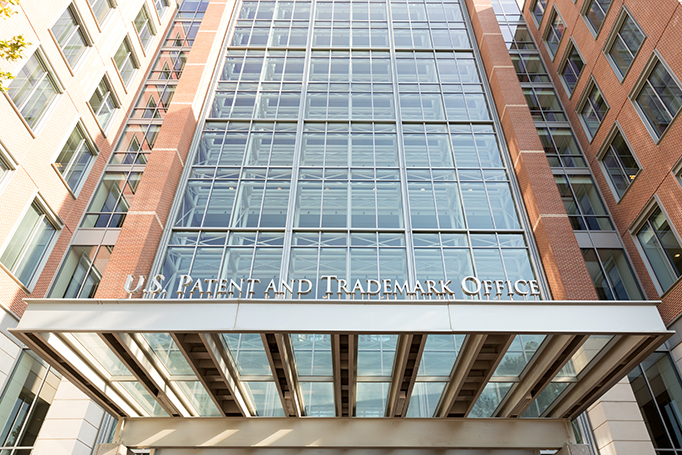
“Hope smiles from the threshold of the year to come, whispering ‘it will be happier’.”
― Alfred Lord Tennyson
The end of a year is always a time for reflection on what we’ve accomplished and where we want to go. In 2020, the world faced a pandemic unlike anything we have seen in a century. Yet, as they always do during difficult times, inventors and entrepreneurs rose to the challenge.
Consider, for example, the multiple COVID-19 vaccines that were developed in less than a year, but are based on decades of research and countless inventions in dozens of scientific and technology disciplines. The importance of our nation’s consistent support of such creativity over time is more evident now than ever. As one COVID-19 vaccine manufacturer noted in its press release: “Intellectual property rights play an important role in encouraging investment in research.”
There are many other innovations that helped confront the global health crisis. Some companies built ventilators, masks, testing equipment, and other life-saving necessities at a previously unimaginable scale. Many others facilitated a quick and massive shift to telework. The advanced networks making this possible are keeping large segments of the U.S. economy operational. They have reduced exposure to the virus and will permanently change how we work, shop, and live.
The USPTO has been instrumental in spurring these innovations. When we do our job right, individuals and companies are motivated to keep inventing, secure in the knowledge that our great nation will protect their IP. And when it mattered most over this tumultuous year, we certainly did our job right.
Most importantly, we remained open for business and we worked harder than ever before. Because we have been a national leader in telework, we were well positioned to transition the USPTO’s 13,000-plus employees to full-time telework. Still, this required herculean efforts on the part of everyone, but especially our IT professionals who continue to make it possible. As a result of their amazing efforts, our employees’ productivity did not suffer. In fact, we are examining patent applications faster than last year.
We also implemented a number of programs to directly assist our stakeholders. We recognized that small companies and individual inventors play a critical role inventing treatments and cures for COVID-19, and we were vigilant in ensuring that they received the support they needed. To that end, we instituted the COVID-19 Fast Track Program, which enabled small- and micro-entities to accelerate prosecution of COVID-19-related patent applications, at no charge. We also launched Patents 4 Partnerships, which provided a repository of COVID-19-related patents and patent applications, and created a voluntary platform for connecting patentees and potential licensees.
More generally, we instituted a number of temporary changes providing the greater innovation community with more flexibility in meeting filing deadlines and making fee payments. Within days of Congress passing the CARES Act, we waived many patent and trademark-related deadlines for situations where an applicant could not meet a deadline or make a payment because of the pandemic. We lifted all original signature requirements; and we moved to an entirely electronic filing system, including even for plant patents.
And, notwithstanding the difficulties caused by COVID-19, we continued to implement broader improvements to the American innovation ecosystem. For example, we improved our Section 101 analysis, increasing the certainty of examination by a remarkable 44%. And we restored balance to post-grant proceedings at the PTAB through a series of carefully-crafted reforms. We initiated a major national effort to broaden participation in the IP community by launching an Expanding Innovation hub, and starting the National Council for Expanding American Innovation. And we launched the Legal Experience and Advancement Program (LEAP) to help develop the next generation of attorneys. We saw the new – and very significant – Trademark Modernization Act signed into law. And we helped more trademark applicants than ever before, with the Trademark Assistance Center answering 128,370 calls, a 10% increase over the prior year.
This year, during the pandemic, we also greatly increased our collaboration with other countries to the benefit of our stakeholders. We entered new bilateral agreements, such as a parallel patent grant agreement with Mexico; a patent validation agreement with Cambodia; and a new memorandum of understanding with India. And on the multilateral stage, we worked closely with many other nations to create a broad coalition of countries to elect new leaders at WIPO who champion the importance of, and respect for, intellectual property. We also elevated the rank of our IP attachés at several major embassies, in a clear signal that the United States takes very seriously the protection and enforcement of IP rights around the world.
These are just some of the highlights. You can find others on our website and news releases. I am so very proud to have led the dedicated employees of the USPTO who stepped up to the challenges of a most remarkable year to help keep America moving forward with critical innovations that are now saving lives across the globe.
And the best is yet to come. Our intellectual property system — born from our Constitution and steeped in our history — is strong and it supports our nation’s innovators who are more creative and more capable than they have ever been. “Hope smiles” on this great country, and I am convinced that its future is bright indeed.
On behalf of our entire nationwide USPTO workforce, I wish for you a safe, healthy, and prosperous 2021. For, as Alfred Lord Tennyson ventured, “It will be happier.”
Posted at 08:03AM Dec 31, 2020 in USPTO | Comments[5]
First-rate information technology infrastructure supports USPTO teleworkers nationwide
Blog by Andrei Iancu, Under Secretary of Commerce for Intellectual Property and Director of the USPTO and Jamie Holcombe, Chief Information Officer of the USPTO

Remember that old U.S. Post Office creed, “Neither snow nor rain nor heat nor gloom of night stays these couriers from the swift completion of their appointed rounds?”
That’s how we feel about our work at the United States Patent and Trademark Office (USPTO). Granted, we’ve faced much worse in the past three months than just inclement weather. Even so, the USPTO’s 13,000 employees have endured the historic challenges and, through an efficient teleworking system, have kept America’s engine of innovation moving forward.
Today, so much of what we do at the USPTO relies on our information technology (IT) systems. And there’s no doubt that the pandemic and the resulting stay-at-home orders have tested the limits of these systems. But, after the intensive IT stabilization and modernization efforts of the past two years, the USPTO was well prepared when our physical offices closed in March.
We transitioned to a remote workforce with virtually no disruption, despite having an unprecedented number of employees accessing our IT systems from home. We now have, on average, over 13,000 secure Virtual Private Network (VPN) connections to our campus every day. This is a 75 percent increase over our daily average prior to the pandemic.
We also now have over 1,200 virtual meetings each day using our secure video teleconferencing tools, connecting an average of 6,000 participants from among our workforce, our contractors, and the public at large. Our teleconferencing systems allow employees to conduct a variety of meetings and applicant interviews, and even hold virtual hearings before the Patent and Trademark Trial and Appeal Boards. To fully leverage these collaboration tools, we undertook five system upgrades and configuration enhancements to our teleconferencing infrastructure.
In addition, we planned, staged, and executed the procurement and shipment of 2,000 monitors and 3,200 printers to teleworking employees in the first few weeks after the stay-at-home order was issued. We also deployed over 400 broadband routers to recently hired examiners to provide better connectivity to the USPTO systems.
As we noted last year, fully modernizing the USPTO’s technology systems to industry standards is a large-scale project that will require significant time and effort. Much work remains to be done, and there will undoubtedly be hurdles along the way. Even so, our success in transitioning to almost an entire work-from-home workforce demonstrates that we’ve made remarkable progress in a short period of time.
The USPTO remains committed to helping inventors and entrepreneurs weather this crisis and hit the ground running once it passes. And, in doing so, we will continue to enlist modern ways of doing business, including improving the performance and reliability of our IT infrastructure and other systems.
Our employees and our IT team continue to make us very proud. They work tirelessly to ensure that nothing stops our service to America’s innovators.
Posted at 11:05AM Jul 16, 2020 in USPTO | Comments[1]
Spotlight on Commerce: Thomas Hong, Primary Patent Examiner
Guest blog by Thomas Hong, Primary Patent Examiner, U.S. Patent and Trademark Office
Editorial note: This post is part of the Spotlight on Commerce series highlighting the contributions of Department of Commerce employees in honor of Asian American and Pacific Islander (AAPI) Heritage Month.
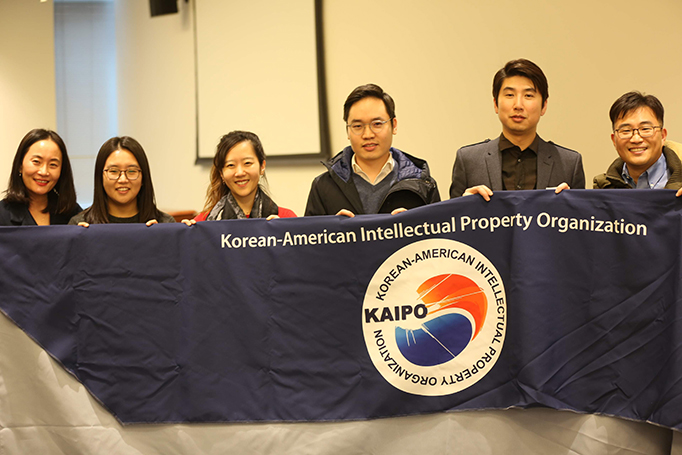
Thomas Hong (right) with officers from the Korean-American Intellectual Property Organization at the USPTO.
I am a primary patent examiner at the U.S. Patent and Trademark Office (USPTO). I review patent applications within the mechanical engineering technology center, specializing in amusement and education devices. I also serve as president of the Korean-American Intellectual Property Organization (KAIPO), the USPTO’s youngest affinity group, which aims to promote and support the growth and development of Korean-American intellectual property professionals.
It took me more than a decade to reach where I am today. Upon graduating with a bachelor’s degree in mechanical engineering at Seoul National University in South Korea in 1999, I immigrated to America with my family in pursuit of new opportunities.
I continued my studies at Purdue University and obtained a Master of Science in Mechanical Engineering in 2004, and my thesis topic related to Computer Aided Design and Manufacturing. This led me to my first career as a software developer with government consulting firms. While it was a good job, I found that it was not the right career path for me. I felt that I rushed into the job and surrendered to the industry’s demands. I felt like I lost sight of my passions and interests and didn’t see myself growing in this field. I decided to change my career path and enrolled at the George Mason School of Law (now known as Antonin Scalia Law School).
As a first generation immigrant, law school was an eye-opening experience for me. I was one of only a few among my classmates holding a college degree from a non-English speaking country. I found myself not only having to develop my fluency in English, but also having to start learning a completely new language: law. While these years weren’t easy, I realized how fortunate I was to have a family and community that was incredibly supportive of me as I pursued my goals and ambitions. Many first-generation immigrants sacrifice these kinds of opportunities for their future generations.
Law school was a turning point for me. It was a time for self-reflection. It was during law school that my mindset began changing from a singular, self-serving view to a more encompassing community view. I looked not only at how I can better myself, but also at how I can better serve and contribute to my community and beyond. I started volunteering for communities I belonged to. I was a marshal at the PGA Tour Tournament, was on the board of directors in my neighborhood’s community group, and served as an officer for the Korean-American Intellectual Property Bar Association (KAIPBA).
I ultimately chose to work for the federal government because, to me, being a career civil servant is a privilege. This unique career gives me an opportunity to serve our biggest community, the public, while simultaneously developing my career and growing as a person.
One of my proudest moments of my time here at USPTO has been working with my colleagues to establish an affinity group for Korean-American professionals at the USPTO: KAIPO. The USPTO’s workforce encompasses multi-generation Asian immigrants, including Korean-Americans, who face unique challenges and have extraordinary knowledge and experiences to pass on. My hope for KAIPO is to connect these different generations so that we can share our unique experiences and help each other grow and develop in our professional and personal lives.
My advice for those who are interested in a federal government career is to continuously strive to learn and develop your competencies, and find your passions. When you find where these align, you begin to find how you can best contribute and serve the public.
Asian American and Pacific Islander Heritage Month is a time for celebration and a time to recognize contributions of the Asian American and Pacific Islander community in this country. It was a long journey, spanning two countries, for me to get to this point in my career, and I am proud and honored to be here at the USPTO working in public service alongside so many dedicated and hardworking individuals.
Ed. Note: This post is part of the Spotlight on Commerce series highlighting the contributions of Department of Commerce employees in honor of Asian American and Pacific Islander (AAPI) Heritage Month.
Posted at 06:10AM May 20, 2020 in USPTO | Comments[1]
Spotlight on Commerce: Elizabeth Chu, Social Media Specialist and Acting Website Editor-in-Chief
Guest blog by Elizabeth Chu, Social Media Specialist and Acting Website Editor-in-Chief, USPTO
Editorial Note: This post is part of a series in honor of Public Service Recognition Week (PSRW), showcasing the vast and diverse work of Commerce employees collectively working together to deliver important services that are helping the American economy grow.
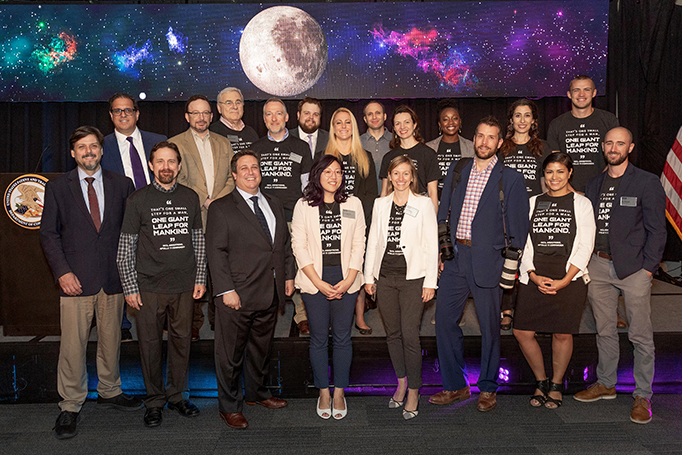
Elizabeth Chu (pictured first row, center) and USPTO communications staff at the “Apollo 50: The role of intellectual property in space commerce” event on July 23, 2019.
As the Social Media Specialist for the U.S. Patent and Trademark Office (USPTO), I am responsible for planning, implementing, and monitoring the agency’s social media strategy to increase brand awareness and strengthen our digital presence. Recently, I stepped in as the Acting Website Editor-in-Chief, due to the recent departure of a colleague. Adding website responsibilities and new skills to my current role as Social Media Specialist—all during a pandemic—has been a whirlwind, to say the least. Luckily, I’m surrounded by generous, dedicated, and talented colleagues in the Office of the Chief Communications Officer who help and support me when I need it. It’s a privilege to work side-by-side with professional and expert communicators in a fast-paced work environment.
My parents and sisters immigrated to the United States from South Korea in the 1980s. I was born in North Carolina, but my family moved to Maryland when I was very young and raised me there. Growing up, my parents and sisters have always been my main influences. Like most first-generation immigrants, my parents worked hard, long days in blue-collar jobs. Watching them, I learned that diligence, honesty, and a good education were important for a successful career and life. I feel fortunate to have a family that’s supportive of all my passions and career pursuits.
I studied art history at the University of Maryland and, after graduation, started my first full-time job in Washington, D.C. Halfway through my three years at the National Gallery of Art, I applied to an arts management program at American University. After receiving a Master of Arts in arts management, I began working for the Washington Ballet in the marketing and communications department where I gained a lot of marketing and communications experience. Nonprofit arts organizations are fast-paced, hardworking entities with limited budgets. Supporting the arts was a fulfilling experience because I could share my passion for the arts every day with others. Although I no longer work for arts organizations, I still seek volunteer opportunities with museums or studio arts classes.
Transitioning from a small, nonprofit arts organization to a federal agency with over 13,000 employees was initially nerve-racking, but it’s been one of the most rewarding changes of my life. Not only do I have the pleasure of working with a creative and talented team of communicators at the USPTO, but I have also had the unique opportunity to work on award-winning projects such as 10 Million Patents and the commemoration of the 50th anniversary of the moon landing. The former is a significant milestone that we planned for and executed over a multi-month timeline with a detailed communications plan. The campaign culminated with an official signing ceremony at the White House and a special event at George Washington’s Mount Vernon. The moon landing event was significant to me because I led and coordinated the communications plan for that project. Our focus was on space innovation, technology transfer from the Apollo missions, and an overview of the current Administration policy on space exploration and space commerce. This communications plan culminated in one of the biggest events in recent USPTO history and featured the NASA Administrator Jim Bridenstine and Secretary of Commerce Wilbur Ross. These projects were successful because of the extremely talented and knowledgeable communicators on my team.
Working on major, successful campaigns that help educate the public about the importance of intellectual property is an honor and privilege. It is especially rewarding that I get to do this work with over 13,000 other colleagues dedicated to American innovation and who work hard every day on behalf of inventors, makers, and creators across the United States.
I am proud to work in public service at the U.S Patent and Trademark Office because I know that my efforts to educate the public and raise public awareness support innovators of all ages, genders, and backgrounds.
Posted at 12:42PM May 05, 2020 in USPTO | Comments[2]
Spotlight on Commerce: Allison Bourke, Supervisory Patent Examiner
Guest blog post by Allison Bourke, Supervisory Patent Examiner, U.S. Patent and Trademark Office
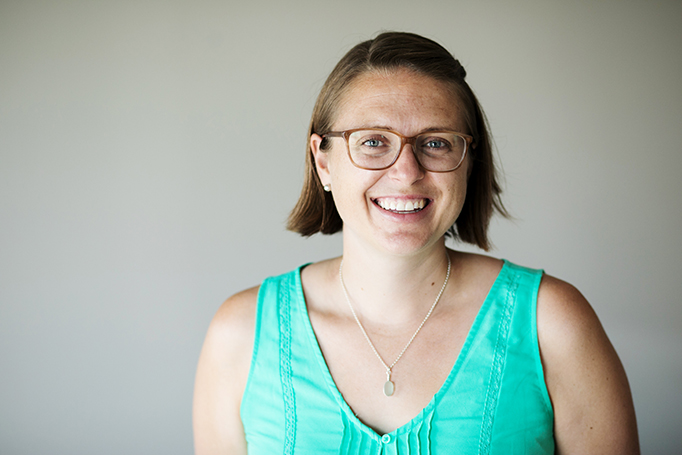
Allison Bourke, Supervisory Patent Examiner, U.S. Patent and Trademark Office
Ed. note: This post is part of the Spotlight on Commerce series highlighting the contributions of Department of Commerce women during Women’s History Month.
I am a supervisory patent examiner at the Department of Commerce’s United States Patent and Trademark Office (USPTO) in electrochemistry technology, specifically solar cells, thermoelectrics, fuel cells, and batteries. I support 15 patent examiners and provide assistance so they can get their patent applications reviewed in a timely manner.
I started at the USPTO as a patent examiner in Alexandria, Virginia, in 2009, after attending the University of Arizona and University of Michigan for degrees in chemical engineering, and I absolutely loved my experience in the D.C. metro area. I grew up in the mountains of northern Arizona, so when the opportunity to work in the USPTO office in Denver arose (the Rocky Mountain Regional Office opened in 2014), I packed up my stuff and cats and headed west! I have really enjoyed the small office experience in Denver (100 employees vs. thousands of employees in Alexandria), and the outdoor opportunities in the area are endless. In Denver, I have become a mentor to a young elementary school girl who is attempting to conquer her multiplication tables.
One of my proudest accomplishments at the USPTO has been helping found, with other like-minded colleagues, two women’s organizations: Women in Science and Engineering at the Alexandria campus and Women in Technology and Science at the Rocky Mountain Regional Office. Both organizations have a mission to promote STEM/intellectual property (IP) for K-12 and college students and support members through social and enrichment activities. We have organized, given talks to local college Society of Women Engineers sections about careers in IP, and, with the Rocky Mountain Office’s Outreach team, assisted with Girl Scout IP Patch days and women’s IP networking events with outside organizations. Both organizations celebrate women all year long but focus on Women’s History Month with numerous activities, such as hosting inspirational talks, tea parties, and strong women movie-viewing parties.
I look forward to March each year so we can remind everyone of all the awesome accomplishments of women throughout history and inspire those for the future!
Posted at 11:45AM Mar 31, 2020 in USPTO |
Spotlight on Commerce: Davetta Goins, Supervisory Patent Examiner
Guest blog post by Davetta Goins, Supervisory Patent Examiner, U.S. Patent and Trademark Office

Davetta Goins, Supervisory Patent Examiner (Photo by Jay Premack/USPTO)
Ed. note: This post is part of the Spotlight on Commerce series highlighting the contributions of Department of Commerce African Americans during Black History Month.
Growing up in the Hampton Roads area of Virginia, where my family, neighbors, and close friends were scientists, engineers, doctors, lawyers, and teachers, I was surrounded by professionals. My parents were very active in community organizations that helped encourage teens in local high schools to enter the fields of science, math, and technology. These programs introduced me to a vast array of career paths, and paved the way for my decision to pursue a degree in electrical engineering.
After graduating from North Carolina Agricultural and Technical State University, a Historically Black College or University, I became a patent examiner at the Department of Commerce's U.S. Patent and Trademark Office (USPTO). When I started working for the agency, I was one of only a few black women working in a Technology Center (TC) of around 200 examiners. This was disconcerting, especially because the first black patent clerk, Anthony Bowen, had been an employee in the 1830's. That was well over 160 years prior to me joining the USPTO. However, I have seen the agency become extremely diverse over the past 20 years. Today, nearly one-fifth of the USPTO’s employees are African American. I attribute this increase in number to various recruiting programs and affinity groups that promote science and engineering to local communities and historically black universities--like the one I attended.
After examining patents in the field of electrical communications for 15 years, I became a Supervisory Patent Examiner. I now oversee a group of employees who review applications related to electrical audio signal processing systems and devices. Aside from assisting examiners with their work product, I also support various projects in the agency. I mentor as well as provide mock interviews to employees who aspire to become managers, travel to various universities to inform students of job opportunities the USPTO has to offer, and co-lead an engagement team that helps foster initiatives centered around the agency’s mission and strategic plan. I also lead a work-life team, which organizes activities for TC employees in hopes of creating a balance of work and life.
I’m proud to work for an agency that strives for the inclusion of all backgrounds while providing ample opportunities to employees as they further their careers.
Posted at 09:11AM Feb 26, 2020 in USPTO | Comments[14]
USPTO in the game at CES
Blog by Under Secretary of Commerce for Intellectual Property and Director of the USPTO Andrei Iancu
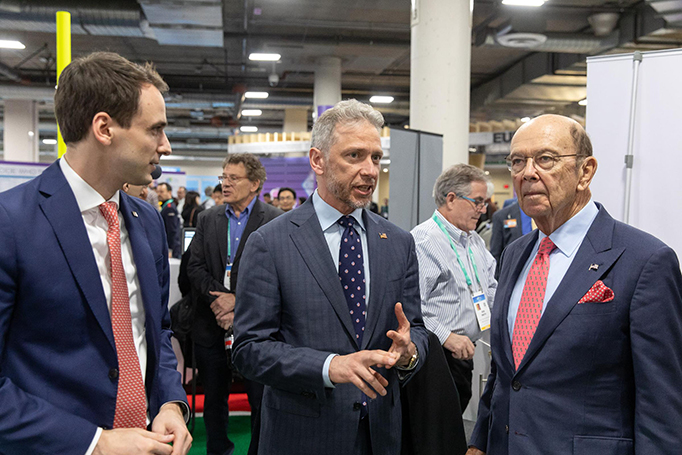 From left: U.S. Chief Technology Officer Michael Kratsios, Director of the USPTO Andrei Iancu and Secretary of Commerce Wilbur Ross visit the joint government booth at CES. (Photo by Jeff Isaacs/USPTO)
From left: U.S. Chief Technology Officer Michael Kratsios, Director of the USPTO Andrei Iancu and Secretary of Commerce Wilbur Ross visit the joint government booth at CES. (Photo by Jeff Isaacs/USPTO)
In January, Las Vegas turned its attention from the bright lights, shows, and casinos to leading consumer technology innovations in robotics, transportation, electronics, and more. Thousands of technology enthusiasts, including representatives from the Department of Commerce, the USPTO, the National Science Foundation (NSF), and the Small Business Administration (SBA), descended upon the bustling metropolis for CES to take part in what has been billed as the “Global Stage for Innovation.” Now in its 52nd year, CES is the place to be for those in the consumer technology industry. It is also one of the largest consumer shows in the world with more than 180,000 attendees and thousands of exhibitors. This year’s show featured an incredible array of products, including foldable tablets, smart home devices, plant-based substitutes for pork, emotional support robots, and flying taxis. These are not only the technologies of the distant future – many are available in the marketplace today.
USPTO Gets in the Game

Joint federal government booth at CES. (Photo by Jeff Isaacs/USPTO)
Through our annual participation in CES, the USPTO is able to reach many current and future entrepreneurs to drive home the importance of securing intellectual property (IP) both domestically and abroad.
The theme of the USPTO booth at CES’s Eureka Park startup village was “Get in the (intellectual property) Game.” The booth was co-located with a National Inventors Hall of Fame (NIHF) exhibit highlighting the work of Stan Honey, inventor of the electronic football first down line. At the booth, staff from the USPTO provided resources on securing patent, trademark, and other IP rights. We were also joined by representatives from NSF, SBA, and SelectUSA who provided assistance to startups to help them navigate opportunities offered by the federal government.
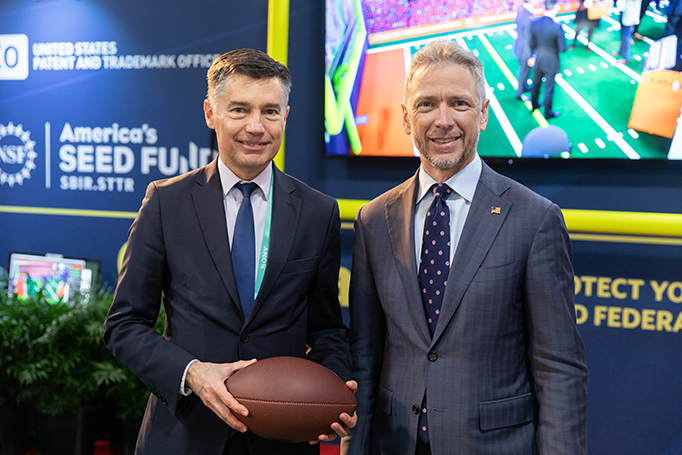
Director General of the French Patent Office (Institut National de la Propriété, INPI), Pascal Faure visits with Director Iancu at CES. (Photo by Jeff Isaacs/USPTO)
Visitors to our CES booth included U.S. Secretary of Commerce Wilbur Ross and U.S. Chief Technology Officer (CTO) Michael Kratsios. The Director General of the French Patent Office (Institut National de la Propriété, INPI), Pascal Faure, also joined us briefly, and he even got a quick lesson on American football!
NIHF Inductee Announcement
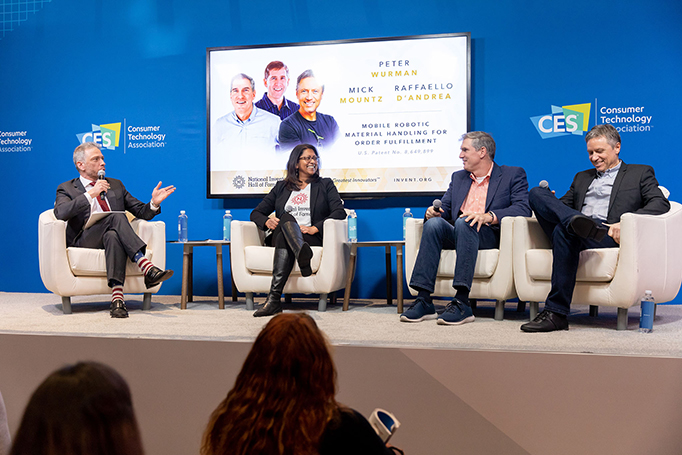
From left: Director Iancu and NIHF Executive Vice President Rini Paiva announced the 2020 class of inductees on the CTA Tech stage on January 7. They were joined by two of the new inductees, Mick Mountz and Raffaello D’Andrea, co-founders of robotics company Kiva Systems. (Photo by Jeff Isaacs/USPTO)
During CES, I also had the great pleasure of announcing the 2020 inductees to the National Inventors Hall of Fame (NIHF) along with NIHF Executive Vice President Rini Paiva. This year’s class of inductees featured a tie for the highest number of women inventors from the past years. Technologies from the inductees ranged from the modern parachute to medical devices and software. I was delighted to be joined live during the announcement by two of the 2020 inductees – Mick Mountz and Raffaello D'Andrea – the co-founders of the robotics company, Kiva Systems. We look forward to further celebrating the entire class of the 2020 living and historic inventor-inductees and their societal contributions. The NIHF 2020 class will be officially inducted in May at a ceremony in Washington, D.C. View the entire list of the 2020 class of inductees, or watch the induction announcement from CES.
Artificial Intelligence and Innovation Policy
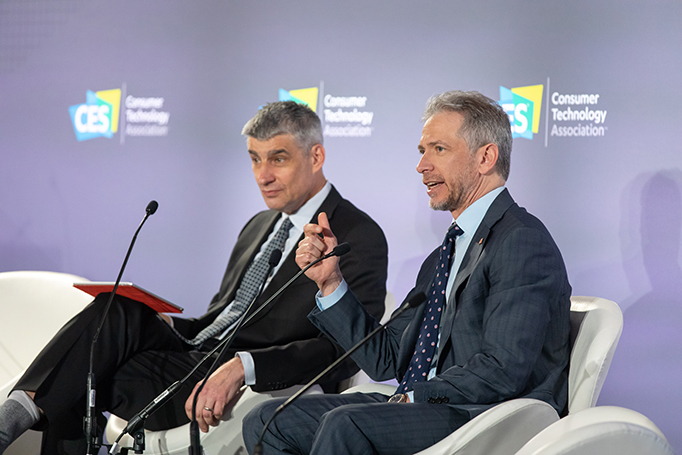
Consumer Technology Association’s Michael Petricone interviews Director Iancu at CES. Their discussion centered around artificial intelligence and intellectual property. (Photo by Jeff Isaacs/USPTO)
Innovation is at the heart of CES’s annual agenda. This year’s show emphasized artificial intelligence (AI) technologies and the numerous innovative products grounded in AI.
I had the pleasure of being interviewed by the Consumer Technology Association’s Senior Vice President for Government Affairs Michael Petricone on the topic of U.S. IP and innovation policy. Watch the recording of the interview. Michael remarked that “the USPTO is the world’s greatest and most pro-innovation patent system.” During our discussion, I summarized some of the USPTO’s current thoughts on AI innovation and patent issues. More public discussion on this topic can be expected in the near future.
U.S. Chief Technology Officer Michael Kratsios, who visited the USPTO booth, also spoke about AI policy. His focus was on the newly released White House Executive Order and principles promoting the need for a more balanced regulatory approach on safety in the innovation space. An overarching theme of these regulations is a focus on potential risks related to the government’s over-regulation of AI. As he explained during an interview, “If we’re too heavy-handed with artificial intelligence, we will end up stifling entire industries, and we want to make sure to [instead] foster the generation [of these industries] in the United States.”
I also met with U.S. Department of Transportation Secretary, Elaine Chao. Secretary Chao spoke at length about AI regulation as it relates to the transportation industry. In prepared remarks, she stressed the critical importance of “protecting American innovation and creativity – by protecting intellectual property.”
CES made abundantly clear, once again, that innovation is driving the next generation and the future. IP is the necessary ingredient that fuels such innovation at accelerating rates. As the guardian of our intellectual property system, the USPTO looks forward to helping entrepreneurs and inventors protect these exciting new technologies.
Posted at 03:39AM Feb 24, 2020 in USPTO |
Reflections of John Cabeca, USPTO Silicon Valley Regional Director
Blog by Deputy Under Secretary of Commerce for Intellectual Property and Deputy Director of the USPTO Laura Peter
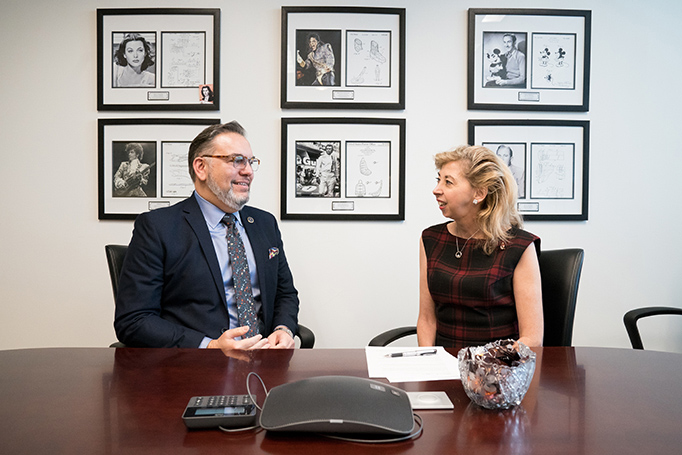
Deputy Director Laura Peter speaks with Silicon Valley Regional Director John Cabeca. (Photo by Jay Premack/USPTO)
Recently, I spoke with John Cabeca, USPTO Silicon Valley Regional Director in San Jose, California, about his experience at the USPTO and what’s next for him. John is a 30-plus-year veteran of the USPTO. He served in numerous key leadership roles throughout his tenure and has dedicated much of his career to working with significant customers of the USPTO on IP matters and through outreach and education programs to help small and large businesses, startups, and entrepreneurs. Over the years, he served the USPTO in important roles, including in the Office of Patent Legal Administration, the Office of Governmental Affairs, and most recently in the Office of the Under Secretary.
LP: How long has the USPTO had a Silicon Valley Regional Office (SV USPTO) and what is its purpose?
JC: The Silicon Valley office formally opened in October 2015 in the San Jose, California City Hall building. The purpose of the USPTO Silicon Valley Regional Office, and, in fact, all of our regional offices, including Detroit, Denver, and Dallas — is to foster and protect innovation. The regional offices carry out the strategic direction of the Under Secretary of Commerce for Intellectual Property and Director of the USPTO, and are responsible for leading the USPTO's regional efforts in their designated regions of the United States. As Regional Director, I actively engage the western region’s unique network of industries and entrepreneurs, and tailor the USPTO’s initiatives and programs to their needs. The regional office serves as a hub of outreach and education and offers services and programs readily accessible to inventors, entrepreneurs, and businesses. We also work closely with IP practitioners, community and business leaders, and academic institutions, as well as with federal, state and local governments, to advance the IP needs of the innovation ecosystem throughout the region at all levels.
LP: What states does the SV USPTO cover?
JC: The west coast region includes Alaska, Arizona, California, Hawaii, Nevada, Oregon, and Washington State. Comprising seven states, this is the largest region covering over 1.1 million square miles, as well as some of the most innovative businesses and innovators in the country. In 2019, the west coast region originated more than 37% of all domestic patent applications and 28% of all trademark registrations by U.S. registrants.
LP: How does the public at-large including inventors, entrepreneurs, and brand owners benefit from the SV USPTO?
JC: We are here to help them. We hold events from learning the basics about patents and trademarks, to patent and trademark search workshops, to drafting patent claims, to protecting your IP abroad, to even more advanced IP programs as a CLE provider in the State of California. We welcome walk-ins to our office, will come and speak and educate the public any chance we get about IP, and also have the ability to hold virtual examiner interviews and trial and appeal board hearings in our space. The regional office pages of the USPTO website are constantly updated with new opportunities to visit our offices.
LP: What makes serving the Silicon Valley region different than the rest of the country?
JC: As you probably know, there is a huge amount of innovation and entrepreneurship in this region, not only in Silicon Valley, the rest of California, but all across the western region. Like many communities across the country, the western region has a lot of innovation activity. We strive to provide assistance to all types of innovators, from the small inventor, to the new startup, to the more established tech company. Each one is unique and has different needs. But, we work hard to make sure they have the information and resources they need to incorporate IP into their business strategy and to help navigate any hurdles they may face in the process. It has truly been a rewarding experience serving as the regional director for this critically important region to the U.S. economy.
LP: What does an average week on the job entail? What traits make a regional officer director successful?
JC: Every day is different and exciting. I could be meeting with entrepreneurs, seeing the latest technologies, doing a STEM activity with kids, or giving a keynote on IP policy. In essence, the USPTO regional director serves as an emissary for the USPTO in the region and as a conduit for policy recommendations. Often, we meet with stakeholders from some of the most innovative companies in the world and help address their needs and priorities. I also travel quite a bit to all the states in the region, to make sure I understand stakeholder’s needs and concerns. I’m also fortunate to work alongside a talented, dedicated and hard-working team at the USPTO Silicon Valley Regional Office, that enable us to stay on top of everything! I’d say some important traits for a USPTO regional office director are in-depth knowledge of intellectual property, good listening skills, adaptability, the ability to think outside the box, as well as being a relentless advocate for our IP stakeholders.
LP: Can you share some of your accomplishments that you are most proud of during your time as a regional director of the SV office?
JC: Looking back over the past six years, it’s been amazing to be at the forefront of new technologies and see how rapidly they are being developed, including artificial intelligence, driverless cars, 5G, and more. To be able to see these firsthand and help those innovators get those products protected and to market has been really fulfilling. Every day is different, and it energized me to know that every day I was going to learn something. In addition, I’m proud to have led the design, build-out and opening of the USPTO Silicon Valley office facilities. We built an educational component throughout our space, and the office has become a destination for a wide range of visitors, including many international IP delegations coming to meet with us. Our staff works tirelessly to provide resources to the public, reviews applications thoroughly and quickly, and increases the understanding of IP rights. As for the Silicon Valley team, they have been an absolute treasure to work with. I am so very proud of the culture we created together, and honored to work alongside the amazing, talented, hard-working workforce of over 100 employees working out of the USPTO Silicon Valley office and to get to know many of the nearly 500 USPTO employees working from their homes across the region.
LP: What’s next for you?
JC: In early 2020, I will be transitioning into a diplomatic post as the IP attaché for South Asia. I will be based out of the U.S. Embassy in New Delhi, India and will serve U.S. industries doing business in South Asia and advocate for effective IP policies to support a strong and vibrant IP system globally. I will remain in service to the USPTO and the IP community. I’m so excited to build from the great relationships and tremendous experiences here in the western region and look forward to serving U.S. industries in my new capacity.
The USPTO is currently looking to hire a new regional office director to lead and manage the Silicon Valley Regional Office in San Jose, California. This person will be an innovation ambassador in the region, provide stakeholder outreach and education to the public on the importance of IP, and support the innovation and entrepreneurship ecosystem for the entire Western Region, including Alaska, Arizona, California, Hawaii, Nevada, Oregon, and Washington. Apply by January 6, 2020.
Posted at 06:05AM Dec 12, 2019 in USPTO | Comments[5]
New report on underrepresented groups in patenting
Blog by Under Secretary of Commerce for Intellectual Property and Director of the USPTO Andrei Iancu
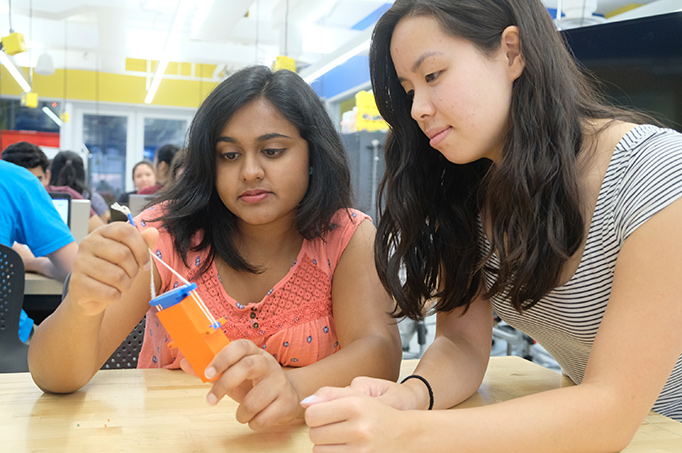
Undergraduate students from Johns Hopkins University, and Finalists in the Collegiate Inventors Competition, work on their award winning invention, PeritoneX, a mechanism that disinfects at-home peritoneal dialysis systems to prevent infection. (Photo courtesy of PeritoneX)
America’s long-standing economic prosperity and global technological leadership depend on a strong and vibrant innovation ecosystem. To maximize the nation’s potential, it’s more important than ever that all Americans who are willing to work hard, persevere and take risks have the opportunity to innovate, to start new companies, to succeed in established companies, and ultimately, to achieve the American dream. To maintain our technological leadership, the United States must seek to broaden our innovation, entrepreneurship and intellectual property ecosystems demographically, geographically, and economically.
The USPTO is at the forefront of this effort. The Study of Underrepresented Classes Chasing Engineering and Science Success Act of 2018, also known as the “SUCCESS Act,” directed the United States Patent and Trademark Office (USPTO), in consultation with the Small Business Administration, to identify publicly available data on the number of patents annually applied for and obtained by women, minorities, and veterans, and the benefits of increasing these numbers. The Act also asked for legislative recommendations on how to encourage and increase the participation by these groups as inventor-patentees and entrepreneurs. On October 31, we released our SUCCESS Act report.
As detailed in our report, after reviewing literature and data sources, we found that there is a limited amount of publicly available information regarding the participation rates of women, minorities, and veterans in the patent system. One of the most comprehensive studies on women inventors was published by the USPTO earlier this year, “Progress and Potential: a profile of women inventors on U.S. patents,” which found that only about 12% of inventors named on U.S. patents are women.
As an agency, we have undertaken a proactive approach to encourage women, minorities, and veterans to innovate and secure patents to protect their innovations. We provide guidance and assistance to inventors, host annual events such as the annual Invention-Con and Women’s Entrepreneurship Symposium, support pro bono networks around the country, offer pro se assistance to make navigating the patent process more accessible, especially to first-time applicants, and have free legal services through 60 participating law school clinics. Plus, our four regional offices serve inventors, entrepreneurs, and small businesses throughout the country, and our Patent and Trademark Resource Centers are located in more than 80 public, state, and academic libraries—many in minority and underserved communities. These centers offer regular programming, virtual office hours with USPTO subject matter experts, and librarians trained to assist with intellectual property research.
In our SUCCESS Act report, we identified ways to build on existing USPTO programs by undertaking even more initiatives, some of which include:
• Council for innovation inclusiveness: The USPTO plans to establish a council to develop a national strategy for promoting and increasing the participation of underrepresented groups as inventor-patentees, entrepreneurs, and innovation leaders.
• Workforce development: The USPTO will work with other government agencies to help develop workforce training materials that include information on how to obtain a patent, and the importance of invention and IP protections.
• Increased development of IP training for educators: The USPTO will work with other federal agencies to develop training materials to help elementary, middle, and high school teachers incorporate the concepts of invention and IP creation and protection into classroom instruction.
Our report also includes a number of legislative recommendations for Congress, such as:
• Enhance USPTO authority to gather information: Congress could authorize a streamlined mechanism for the USPTO to undertake a voluntary, confidential, biennial survey of individuals named in patent applications that have been filed with the USPTO.
• Expand the purposes/scopes of relevant federal grant programs: Congress could expand the authorized uses of grants and funds in appropriate federal programs to include activities that promote invention and entrepreneurship, as well as the protection of inventions and innovations using intellectual property among underrepresented groups.
• Support exhibits at national museums featuring inventors/entrepreneurs: Congress could encourage national museums to feature exhibits that highlight the contributions to U.S. invention and entrepreneurship by individuals from underrepresented groups.
In addition, the USPTO plays a critical role to equip tomorrow’s inventors, innovators, and entrepreneurs with the skills they need to succeed. That is why we support dozens of STEM-related programs and events that provide basic education about intellectual property to young men and women. These include the Girl Scout IP patch, which is available to Girl Scout troops across the nation; programs in partnership with the National Inventors Hall of Fame, such as Camp Invention, which is offered in school districts in every state, and the Collegiate Inventors Competition, which takes place each year at the USPTO; the National Summer Teacher Institute, which incorporates invention and IP into classrooms; collaborations with historically black colleges and universities; and so much more.
Broadening the innovation ecosphere to include more women, minorities, and veterans is critical to inspiring novel inventions, driving economic growth, and maintaining America’s global competitiveness. We will continue to work with our stakeholders, other government agencies, Congress, and the public to maximize the potential for all individuals—regardless of background or status—to invent, protect their inventions, and succeed.
Posted at 04:15AM Nov 25, 2019 in USPTO | Comments[3]
Spotlight on Commerce: Megan Miller, Plain Language Writer/Editor
A post about the USPTO from the Department of Commerce.
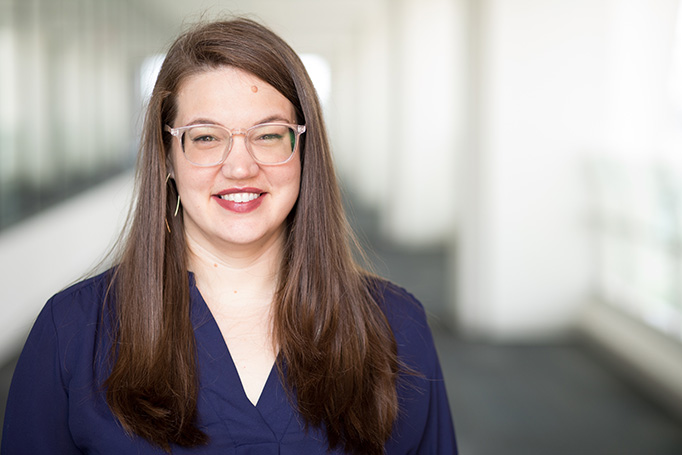
Megan Miller, Plain Language Writer/Editor, USPTO. (Photo by Jay Premack/USPTO)
After earning my engineering degree and serving in the Navy for seven years, the next logical step in my career was to take a position as a writer-editor. Sounds disjointed? It's a more natural progression than you might think.
Growing up, I loved math and science. Math homework was my favorite! It was so satisfying to start with a few numbers and a question, then figure out what to do with those numbers to find the answer. In science classes, I asked enough questions to try the patience of both my teachers and fellow students. Predictably, I went to college to be an engineer. I studied biomedical engineering at the University of Rochester. It was fascinating to learn about how the human body works and how the biomedical field uses technology to make it work better. I couldn't wait to graduate and use my skills to build things that would solve real-world problems.
As graduation grew closer, though, I decided I wanted to explore the world of engineering from a different perspective. So, I joined the Navy to study and work in nuclear propulsion. In my training, I learned how the Navy harnesses fission to move ships. It was staggering to learn about a system that starts with a few neutrons zooming around and ends with an aircraft carrier zooming through the ocean. Again, I was awestruck at how engineering gives us systems that are cohesive, despite their complexity, to elegantly solve the world's problems.
During my time in the Navy, in addition to studying nuclear power, I was also a division officer. That meant that I bridged the gap between the command's leadership and the sailors in my division. Despite being on the same ship, those two groups had dramatically different needs and perspectives. Leadership focused on accomplishing the ship's mission and keeping the ship and crew safe. My sailors, on the other hand, were concerned about maintaining and operating a complicated weapon system. When those priorities were at odds, fulfilling my role as a liaison could be quite challenging. I quickly learned that in any form of communication, it's vitally important to start by understanding the needs and perspectives of the other person. The only way to reach them is to shape your message with those needs in mind. Ignore those needs, and you'll fail. For me, a few big failures helped me learn the lesson. Seven years of smaller failures helped me hone the skill, which is fundamental to effective communication.
These experiences laid the groundwork for my career as a writer-editor at the USPTO. My focus in writing and editing is plain language. That doesn't mean that I dumb things down or that I make every piece of content understandable to the general public. It means that I write and edit so my audience can easily find, understand, and use the information they need.
It's all about audience; understanding their needs is the cornerstone of writing in plain language. For me, writing in plain language requires employing the communication skills I developed and refined in the Navy. So, my plain language savvy is a direct result of my service.
Even if you have a clear understanding of your audience, though, writing clearly can still be quite challenging. There are many obstacles to overcome. Sometimes, you're writing to multiple audiences who have vastly different needs. Sometimes, your organization's needs conflict with your audience's needs. Legal topics add another layer of obstacles. Sometimes, when you explain legal concept in the most straightforward way, you get a statement that's only true 99% of the time, making it legally inaccurate. Communicating clearly despite these roadblocks can be difficult, but it's possible. My job is to do just that, and it's my favorite part of writing and editing. Thinking outside the box to find ways to communicate clearly within these constraints is, dare I say, fun. I never expected words to be my medium for solving problems as an adult, but it's just as satisfying as the problem sets I loved as a kid.
My job is to serve Americans by making the information they need more accessible, using words to solve problems along the way. Though I thought I'd grow up to be a distinguished scientist or brilliant inventor, now I know that it's just as fulfilling to be a word engineer.
Ed. note: This post is part of the Spotlight on Commerce series highlighting the contributions of Department of Commerce military veterans in honor of Veterans Day.
Posted at 04:56AM Nov 05, 2019 in USPTO | Comments[1]
